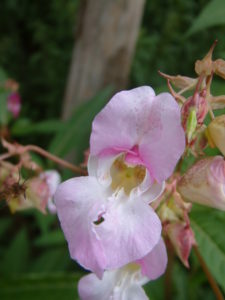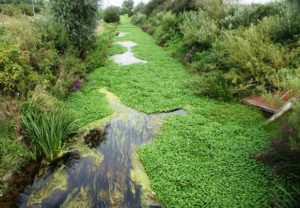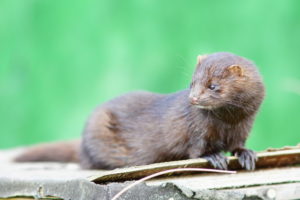Taking on invasive pests
May 3, 2019
While you may enjoy the colourful blooms of rhododendron, invasive non-native species such as this are now regarded as the second greatest threat to global biodiversity after habitat loss and they are causing significant problems for a wide range of species and habitats across the National Park.
In the UK there are now over 1800 invasive non native species in a wide range of environments.
It’s estimated that together invasive non-native species, such as Himalayan balsam, present a financial cost to the UK economy totalling some £2 billion.
We have produced a strategy for tackling Invasive species in the South Downs National Park, this focuses on the most widespread and damaging species and those that we can begin to tackle.
1. Giant hogweed (Herracleum mantegazzium)
2. New Zealand Pigmy Weed (Crassula helmsii)
3. Floating pennywort (Hydrocotyl ranunculoides)
4. Japanese knotweed (Fallopia japonica)
5. Rhododendron (Rhododendron ponticum)
6. Cotoneaster (Contoneaster spp.)
7. American mink (Neovison vison)
8. Himalayan balsam (Impatiens glandulifera)
9. Water fern (Azolla filiculoides)
10. American Skunk Cabbage (Lysichiton americanus)
11. Parrots feather (Myriophyllum aquaticum)
We’ve been working with partners across the South Downs to manage the advance of invasive species within the National Park.
By taking an evidence-based approach, rooted in having good quality data, we can put in place pragmatic measures that can help struggling native species. Staff and volunteers help with surveys of key areas and projects to remove, control and eradicate these pest species.
Below are just some of the invasive species we have in the National Park and the ways we can mitigate them.
 Himalayan Balsam
Himalayan Balsam
Himalayan balsam may look pretty but it’s an invasive species which out-competes native species and, if left uncontrolled, will spread throughout our water courses and beyond.
Each Himalayan balsam plant can produce up to 800 small seeds which are light enough to carry up to 7 metres on the wind as well as in the water. With their ‘exploding’ seed heads it’s not surprising that they soon made their escape out into the wild.
Today the plant is widespread. In the National Park you’re likely to spot it along river and stream banks or in damp woodland.
Himalayan balsam is listed under Schedule 9 of the Wildlife and Countryside Act 1981 which means that it’s an offence to plant or allow it to grow in the wild.
To tackle the problem the government need to determine where the plants are and you can help. Sign-up and use iRecord to easily identify and submit photos and locations of 18 invasive plant species, including Himalayan balsam.
 Floating Pennywort
Floating Pennywort
Floating pennywort may look like it belongs in rivers but it’s a pest species that is spreading rapidly along waterways in the South East of England.
Introduced originally as a plant for garden ponds, it can grow up to 20cm per day and can quickly dominate a waterbody, dominating water flow and blocking out light, causing deoxygenation and obstructing air breathing insects from rising to the water surface and reducing water temperatures.
By regularly cutting floating pennywort during the growing season (May to October), landowners and water managers can ensure our rivers and waterways remain clear, allowing native species to prosper.
 American Mink
American Mink
Another species originally introduced for their commercial value, American mink is largely responsible for the decline of water vole populations across the country. Since the decline of the domestic fur trade, many mink were released from fur farms and have since gone on to cause havoc across rivers.
Under a joint project led by the South Downs National Park Authority, the Environment Agency, Natural England and the Hampshire and Isle of Wight Wildlife Trust, the water vole – once the UK’s fastest declining mammal – is making a comeback in the Meon Valley.
Working with landowners and anglers, we’ve been able to monitor the mink population and to strategically reintroduce water voles.
While the American mink remains a threat to water voles, we can take evasive action to remove mink and help the water vole thrive.
